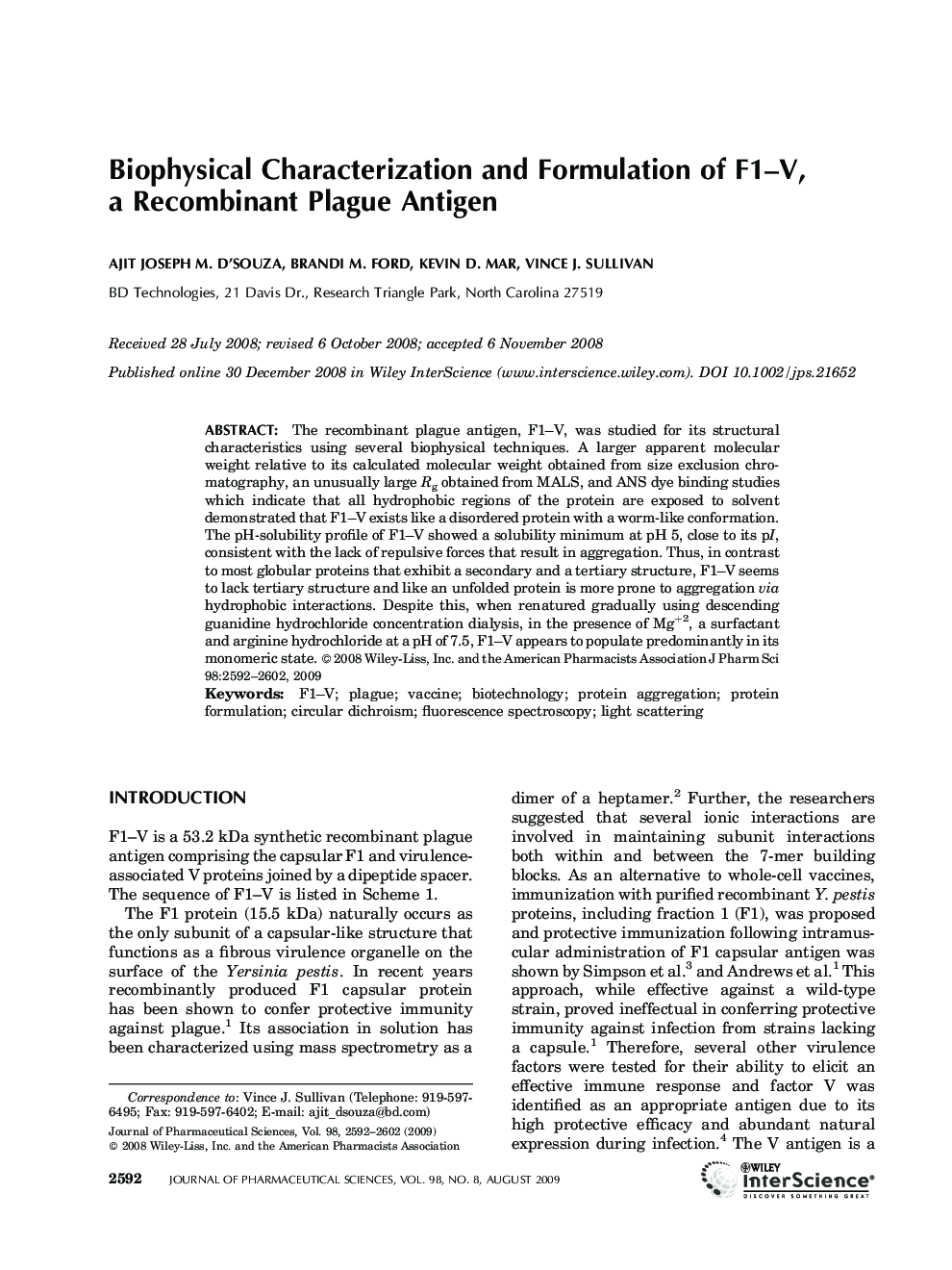| Article ID | Journal | Published Year | Pages | File Type |
|---|---|---|---|---|
| 2486980 | Journal of Pharmaceutical Sciences | 2009 | 11 Pages |
Abstract
The recombinant plague antigen, F1-V, was studied for its structural characteristics using several biophysical techniques. A larger apparent molecular weight relative to its calculated molecular weight obtained from size exclusion chromatography, an unusually large Rg obtained from MALS, and ANS dye binding studies which indicate that all hydrophobic regions of the protein are exposed to solvent demonstrated that F1-V exists like a disordered protein with a worm-like conformation. The pH-solubility profile of F1-V showed a solubility minimum at pH 5, close to its pI, consistent with the lack of repulsive forces that result in aggregation. Thus, in contrast to most globular proteins that exhibit a secondary and a tertiary structure, F1-V seems to lack tertiary structure and like an unfolded protein is more prone to aggregation via hydrophobic interactions. Despite this, when renatured gradually using descending guanidine hydrochloride concentration dialysis, in the presence of Mg+2, a surfactant and arginine hydrochloride at a pH of 7.5, F1-V appears to populate predominantly in its monomeric state. © 2008 Wiley-Liss, Inc. and the American Pharmacists Association J Pharm Sci 98:2592-2602, 2009
Keywords
Related Topics
Health Sciences
Pharmacology, Toxicology and Pharmaceutical Science
Drug Discovery
Authors
Ajit Joseph M. D'Souza, Brandi M. Ford, Kevin D. Mar, Vince J. Sullivan,
